Which Targeting Option Is Best for Brand Awareness Ads?

Whenever you're running paid advertising, you need to have a goal in mind. You might be running ads with the intent of drawing people to your landing pages and converting them into customers. You might be trying to promote a new ebook offer that builds your mailing list. Or you might just be using display ads to get your name out there.
This third goal is called "brand awareness" and it generally uses pay-per-view ads rather than pay-per-click. The reason is, well, you don't necessarily care all that much that the ads aren't getting clicked. You aren't aiming for clicks through to a landing page, subscriptions, or conversions. All you want is to saturate your target audience with ads that include basic information about your business.
The point is, people see those ads, even if they don't click on them. It's like a billboard on the highway. No one is going to be driving down the highway, see a billboard, and pull over to call and book your service.
No, they're going to parse and then pretty much immediately forget the billboard ads they saw. Later, though, when they're looking for a product online, they might encounter the choice between three brands offering the same thing. They will inherently be more interested in the one they've heard of versus the ones they haven't. That billboard delivered awareness of your brand, and they'll click that link before they click a different one.

This is, of course, only true if the awareness you build is neutral or positive. Negative brand awareness – "I only know about this brand because of the social media mess they got caught up in for being prejudiced" or something – doesn't help you. They'll only use that kind of awareness to avoid you.
You're not going to be running paid awareness ads with negative press, though, so there's only so much you can do to control the situation.
Running an awareness campaign tends to have one major benefit, and that's the cost. PPM ads (the kind that are billed by views, not when they are clicked on) tend to be a lot cheaper than PPC ads. You might be paying $1 per click, and with a high click-through rate, you'll end up with maybe 100 views per click, so 100 total views for $1. Meanwhile, it might be $0.50 per mille, or per thousand views. That's 2,000 views for the same $1. And who knows, maybe one or two people in that 2,000 might click through anyway!
If you're interested in running brand awareness ads, you probably want to know what the best targeting options are for them. This can be a pretty complex topic, so I'm going to start by breaking it down into two sections, based on ad network. The two major ad networks I'll be looking at today are Google and Facebook.
 30 Second Summary
30 Second Summary
Paid advertising should have a clear goal, one of which could be brand awareness, typically using pay-per-view ads, not pay-per-click. Such ads broadcast business details to a target audience. People might not click, but seeing the name frequently can create positive brand recognition, like a highway billboard does. It's cost-effective too; thousand-views ads can be cheaper than per-click ones. Via Google or Facebook, ads for brand awareness need broad appeal but precise targeting. Success hinges on audience saturation, not clicks.
Brand Awareness on Google Ads
Google Ads have two main placements: the search and the display network. Search ads are the ads that show up in Google's search directly. They're "limited" in that the search results pages are the only places where the ads can show up, but that's millions of people, so it's not exactly small.
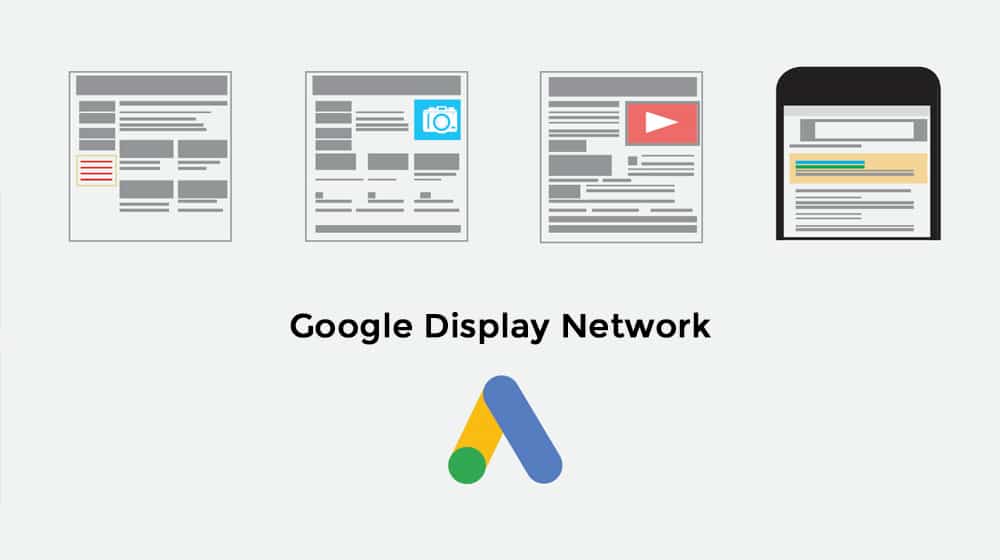
There are two potential pitfalls with this method. First, you need to find the right keywords to target. Targeting your own brand name, which is usually a good idea, doesn't work for brand awareness, because people need to be aware of you to be searching for you. The alternative is to use keywords that are generic to your industry, but those tend to have enough competition that your ads will cost quite a bit more. Plus, Google's search ads don't have a PPM option.
To use Google Ads that have a per-view option, you need to use the display network. The Google display network is all of the sites using Google Ads to make money as a publisher. This includes everything from YouTube and all of the mobile apps running Google's ad platform, to all of the little WordPress blogs and Shopify sites looking to make a little extra cash from display ads. Specifically, you want to use the vCPM bidding style when running those ads.
When you're running brand awareness ads, your primary concern is getting your ad in front of as many different people as possible. You don't care about optimizing for clicks, and you don't necessarily care about highly engaged viewers. All you want to do is get in front of as many relevant people as possible.
This means your ads need to have broad appeal, but you need to target them narrowly enough that they aren't showing up on completely unrelated sites. If you sell gardening supplies, it does you no good to show up on a blog dedicated to poker, right? But you have the flexibility to show up on commercial landscaping sites, DIY gardening sites, sites about identifying plants, sites about making recipes out of garden vegetables, and so on.
To get started with brand awareness on Google Ads, you have two major options.
Predefined Topics
The first is to use one of Google's predefined topics to use as targeting. For example, for our hypothetical gardening supply store, you might want to choose the Home & Garden topic.
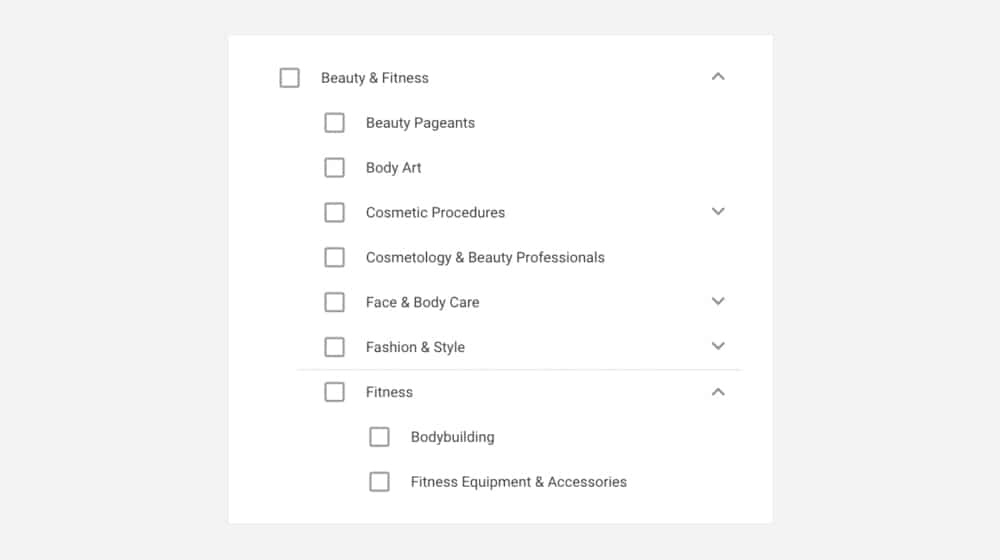
Topics are generally very broad, though. Home and Garden can apply to any of the gardening-based topics above, but it could also apply to interior decorating, remodeling, home improvement, appliance sales, and a whole host of other unrelated topics.
Custom Affinity Audience
Your second option is to use a custom affinity audience. Affinity audiences are audiences Google defines based on certain characteristics. They're fine, but they're often too broad themselves, much like topics. Custom affinity audiences, meanwhile, are a way you can define an affinity audience to fit your own specifications.
A custom affinity audience is defined by four attributes. These are URLs, Places, Apps, and Interests. You can create one by going into your ad group and, in the "what their interests and habits are" section, you can start to define these attributes.

I recommend ignoring Places and Apps for now. Both of these can narrow your audience too far, though if you know specific apps or places are highly valuable to target, you can try them out on your own.
Under interests, add in keywords that are relevant. You might add gardening, or vegetables, or rototillers, or whatever other keywords you want to reach for this particular ad. This is pretty much the same as keyword targeting, though some keywords aren't "interests" and won't work as targeting options.
Under URLs, you want to add in URLs to specific pages where you'd like your ads to show up. If you happen to know of any of those big gardening blogs and other niche sites that run Google Ads, you can add in the page URLs there.
We create blog content that converts - not just for ourselves, but for our clients, too.
We pick blog topics like hedge funds pick stocks. Then, we create articles that are 10x better to earn the top spot.
Content marketing has two ingredients - content and marketing. We've earned our black belts in both.
Apps, of course, you can use in a similar way. If there are big-name apps you know of in your niche, you can target those apps specifically.
From there, running successful display ads tends to be all about saturation, not necessarily about clicks or focus. Ads will tend to saturate their target audiences after some time, though the amount of time depends on the size of the audience, your budget, and the competition reaching them. You want to rotate your ads regularly, changing up the sites you're targeting, the copy you're using, and even the interests you've specified.
Brand Awareness on Facebook Ads
Facebook is a little different than Google as an ad network. For one thing, you're generally just targeting Facebook.com itself, rather than part of a display network. Facebook has a display network, but it's not what I'm concerned about today.
With Facebook, you typically have the choice of two main placements: news feed ads and sidebar ads. There are other kinds of ads, like Stories ads, Instagram ads, ads in Messenger, and so on, but the main two are news feed and sidebar.
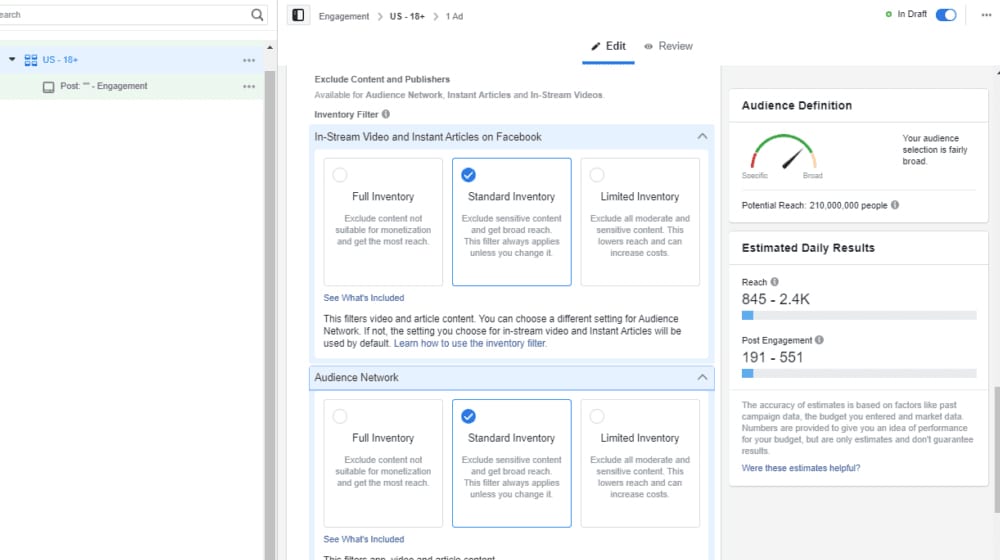
If you've read any of my posts about Facebook Ads in the past, you've probably seen me say that sidebar ads are really only good for brand awareness. That's mostly true; sidebar ads are the least moderated, most spammy, and lowest quality ad position on all of Facebook. They're just shuffled off to the side with all of the other detritus most people ignore on Facebook, so they don't actually work very well for anything.
That pretty much just leaves the news feed. Facebook news feed ads are basically just promoted posts. Most promoted posts have a link attached to them, but since you're just going for brand awareness, you have the choice. You can include a link, or you can just post a compelling blurb of text and an image to promote without anything for a user to click.
If you want to run Facebook Ads for brand awareness, you do have one option that can help streamline the whole process: Facebook's ad objectives. Ad objectives are a way of categorizing ads so that Facebook knows their goal, and can record metrics appropriately. Given two different objectives with otherwise identical ads aimed at identical audiences, Facebook can prioritize showing those ads to different segments of people to reach those objectives.
Facebook Ads Benefits
One of the benefits of using the brand awareness objective for Facebook Ads is that they have the ability to measure an estimate of ad recall lift, which is their way of measuring brand awareness. Other ad networks don't even try to measure brand awareness, so you're left guessing based on search volume, traffic, and other metrics that are tertiary to the main information.
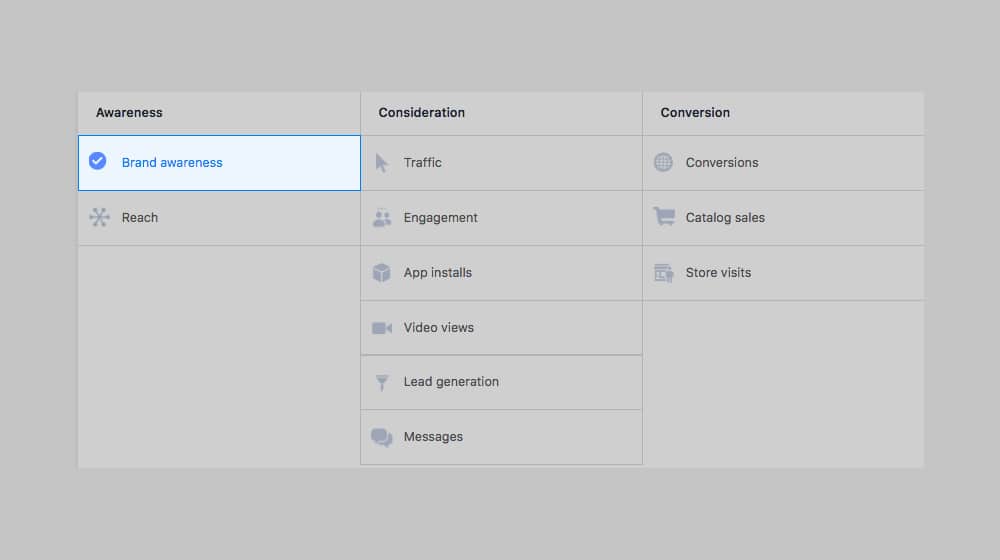
The other major benefit to using Facebook Ads is the wealth of targeting you have available. Google is good, don't get me wrong, but people willingly give huge amounts of personal information to Facebook just as part of using the platform. Between that and the presence of the Facebook tracking pixel on almost as many websites as Google Analytics, you have an incredibly robust selection of targeting options. There's no way I can cover them all, so here are some ideas.
Custom Audiences
Facebook allows you to create custom audiences based on things like mailing lists, website visitors, or other information sources. Obviously, targeting people who already visit your website isn't a great idea for brand awareness, but you can use a lookalike audience.
A lookalike audience takes an existing audience, measures the average demographics and interests across them, and builds a new audience out of people who meet those same metrics. These are people who are, statistically, likely to be interested in your brand, but who don't necessarily know about your brand yet.
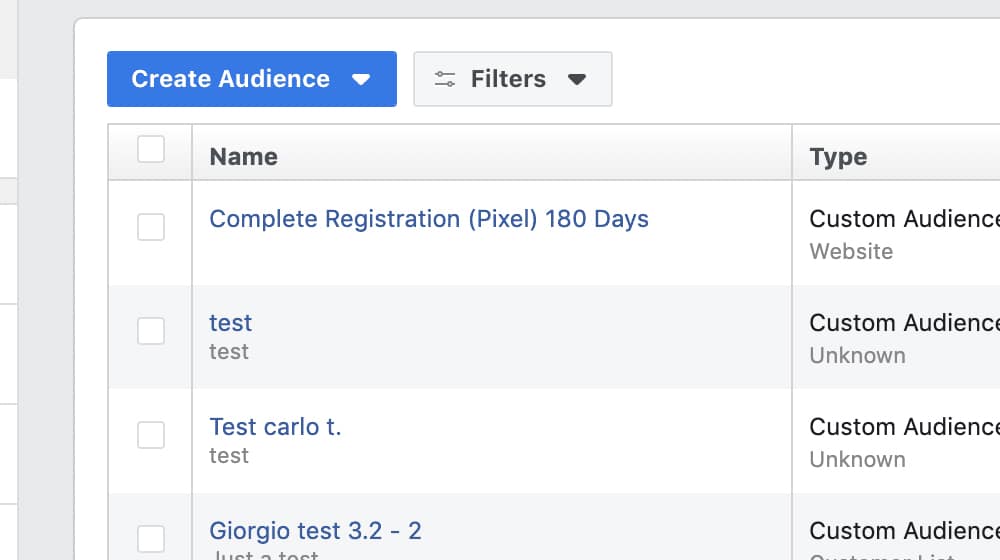
Taking "people who have visited my website" and extrapolating it into a lookalike audience is a great potential targeting option for your brand awareness ads.
Basic Demographics
Lookalike audiences basically do this on their own, but you can use Facebook Insights to develop an awareness of the average kinds of people who visit your site and your page. You might know, for example, that a lot of middle-aged Hispanic women like your site, and you can target middle-aged Hispanic women with a specific ad.
Demographics include things like gender, age, ethnicity, and location, but they also include income level, education level, and other information. Once you've built up a customer profile and know the kinds of people who like your brand the most, you can build up that profile as a targeting profile for your awareness ads to reach more of them.
Interest Targeting
Interests are one of the biggest targeting wildcards in Facebook advertising. There are approximately infinite interests, because anything that has a page, anything that has a keyword, and anything someone might have posted about can become an interest. You can target people who are interested in peonies, garden hoses, and topsoil. You can target people who are interested in gardening or in landscaping. You can target people who are interested in your competitor's Facebook page. The options are nearly endless.
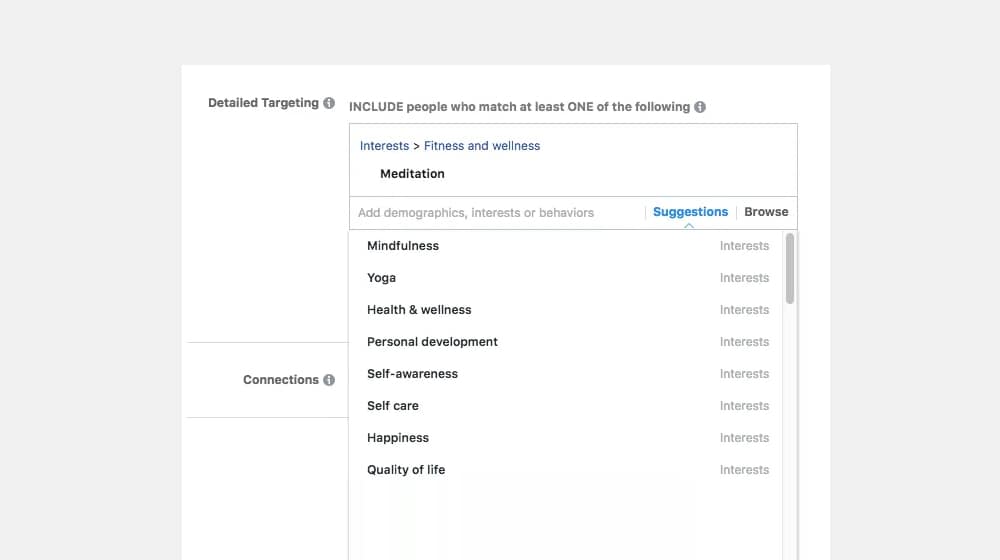
There's so much flexibility with all of the different targeting options that it's easy to spend hours or days just playing with them and never actually get ads running. So, uh, try not to do that.
Ad Frequency
There's one thing that you should pay attention to in Facebook Ads that you don't get with other ad platforms, and that's ad frequency. Ad frequency is a measurement of how often the average person in your target audience sees your ad. For most ads, you want your ad frequency to be around 1 or 2. Anything higher than 2 and you run the risk of people being annoyed at seeing the ad too much, and they could even report it as spam or take other negative actions. Anything under 1 and there are people in your audience who haven't seen your ad yet.

With brand awareness ads, you can choose a higher frequency, because your point is to get your brand name in front of people as much as possible. Facebook is a great way to do this, and it won't cost all that much at the end of the day.
With the interest you generate from an awareness campaign, you have an opportunity. It's up to you to take advantage of that opportunity.



 30 Second Summary
30 Second Summary

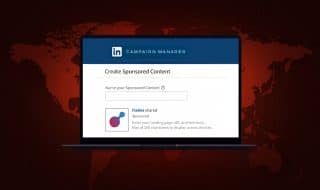
September 21, 2020 at 11:09 am
Hey James! Congrats on creating a very good article. This is really helpful. I just want to ask if, for example, I have a budget of $2K for ads, both FB and Google, how would I divide it? Should I spend more with the other or should I equally divide it?
September 21, 2020 at 7:57 pm
Hey Kelly!
Thanks for that!
When starting out, you could do a 50/50 split on both and see which ends up performing the best. Usually, you'll want to create several different variations of your ads with different text, URLs, and targeting, so that you can see which of them is yielding a better conversion rate.
If one ends up substantially outperforming the other, you may want to pause your other ads and allocate that budget towards the one that is spending those funds more efficiently.
It can take a few months to collect enough conversion and testing data before you make this kind of decision. Make sure you set up conversion tracking on both before you spend anything. You want to know exactly how many dollars you're spending before you make a sale, and the value of that sale - otherwise, you're working blind and have no idea if your ads are effective or not.
I hope this helps!
December 08, 2020 at 10:04 am
I wanted to run FB Ads for my newly opened business and I am wondering if I choose Brand Awareness, does it have location targeting? Also, does it have metrics so I would know if the ads are performing well? Hope to hear from you!
December 11, 2020 at 8:00 pm
Hi Willie!
Yes, you can use location targeting with the "Brand Awareness" goal.
If you install the Facebook pixel and set up conversion tracking you'll have access to more metrics. You'll know how each individual ad is converting (and how much you're spending per conversion).
Good luck!
February 23, 2021 at 4:22 am
Been using FB Ads however, currently, they are having issues with iOS14 so I am thinking of using Google Ads
February 26, 2021 at 6:58 pm
Hey Jhonathan!
The iOS14 update is an interesting one, huh? Curious to see how that shakes out over the next year or two.
Not a bad idea to diversify your ads, in any case. If the results are better on Google, you might wonder why you didn't do it sooner.
Google Ads are generally more expensive but have better conversion rates.
They're way more targeted since you can focus on people that are specifically searching for the keywords your customers search.
Good luck!
P.S. speaking of diversifying your marketing, make sure you're investing in a content strategy too. Drop us a line if you ever need pointing in the right direction 🙂
May 10, 2021 at 11:09 am
Hey James. I have a budget of $500 for FB ads. Do you think this will be enough if I run a brand awareness campaign in a targeted location?
May 14, 2021 at 3:16 pm
Hey Michel!
More than enough - you can do a lot of damage with that.
I'd start smaller than that though and choose your target audience carefully so that you can catch and address any issues early.
July 19, 2022 at 7:58 pm
Very helpful. You've given me quite a few things to consider.
July 21, 2022 at 7:11 pm
Thanks Mary, I'm happy to hear it!